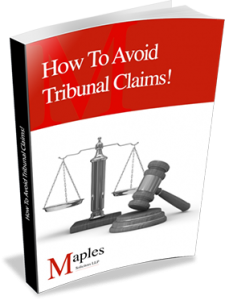Enforcement Action Against Landlords
7th May 2015
Enforcement Action Against Landlords of Residentia
- Introduction
The Housing Act 2004 places a statutory duty upon local authorities to keep housing conditions under review. Local authorities use the Housing Health and Safety Rating System (“HHSRS”) to assess the condition of such residential premises. It is a risk assessment type system, which leads to a hazard(s) being given a numerical score based upon a statutory formula which then correlates to a banding system. A hazard which falls within Bands A, B or C is a Category 1 hazard, and a hazard falling within Bands D to J is a Category 2 hazard. When a Category 1 hazard is found then the local authority is under a duty to take enforcement action, whilst the local authority has a discretion to take action regarding a Category 2 hazard.
- Determining what action should be taken
In my experience a local authority will usually have a policy or procedure that it follows in order to try and be consistent and fair in determining what if any action is to be taken once it has been established that a hazard(s) exists.
Usually a Housing Inspector will undertake a full survey of a property to identify the nature and extent of all hazards present. Following this survey the authority will then write to the landlord to inform him/her of the hazards identified and of any work recommended.
If the hazard(s) provides a non-imminent risk to the health and safety to the occupants, there is no history of non-compliance by the landlord, the tenant(s) is not particularly vulnerable and the landlord can agree a timetable of agreed work then usually the local authority will allow the landlord a reasonable period of time within which to remedy the hazard(s) before taking an enforcement option (see below). If there is an imminent risk to the health and safety of the occupant, there are vulnerable occupants, a landlord with a history of non-compliance, a landlord refusing to agree or act upon a reasonable timetable of remedial work, then these are all factors which might persuade the authority to go straight to an enforcement option rather than by trying to get the landlord to resolve matters through correspondence.
If a landlord is given a chance to remedy the hazard(s) before an enforcement option is taken, then the local authority will also usually monitor the progress of the works to ensure that they are completed properly and in a timely manner. If there are any delays or the work is unacceptable, the local authority may then decide to go to an enforcement option after all.
- Enforcement Options
Action Category 1 Category 2
No Action No Yes
Hazard Awareness Notice Yes Yes
Improvement Notice Yes Yes
Prohibition Order Yes Yes
Emergency Remedial Action Yes No
Emergency Prohibition Order Yes No
Demolition Order Yes In certain circumstances
Clearance Order Yes In certain circumstances
The local authority cannot take more than one of these actions available at any one time to address the hazard (unless it is an emergency action) but can vary the action required if one of the actions taken has not proved successful.
a) Hazard Awareness Notice
This is not a notice actually requiring works, but formally recording one or more of the hazards that exist. In effect this is just putting the landlord on notice of a hazard that may need to be remedied in the future.
b) Improvement Notice
This is a notice requiring remedial action to mitigate one or more hazards. The action must as a minimum remove the Category 1 hazard, but may extend beyond this and the notice may specify timescales for completion. This notice applies where there is no imminent risk of serious harm, where the works required are practicable and there is a vulnerable occupier present.
c) Prohibition Order
This prohibits the use of all or part of the premises, may allow agreed use, and may specify occupancy numbers.
d) Emergency Remedial Action
There must be an imminent risk of serious harm involving a Category 1 hazard. This is limited to the works immediately necessary to minimise the imminent risk.
e) Emergency Prohibition Order
There must be an imminent risk of serious harm involving a Category 1 hazard. This prohibits the use of all or part of the premises and has immediate effect. This is likely to be used where Emergency Remedial Action is not practicable.
f) Demolition Order
This is usually very rare as it is only appropriate where works are impracticable and/or excess costs are involved and demolition would not have an adverse effect on neighbouring properties.
g) Clearance Area
This is extremely unlikely to be applied to single dwellings locally.
- Factors to be taken into account when choosing an enforcement option
Again I would have thought that the local authority would have a list of factors in its policy, but I would expect that they would include some or all of the following:-
- The significant of the hazard(s), i.e. the rating score and Band.
- The extent and location of the hazard(s) within the premises.
- The range of hazard(s) identified within the premises.
- Whether the local authority is under a duty or has a discretion to take formal action in respect of the hazard(s) identified.
- The hazard(s) is not considered sufficiently serious to warrant a local land charge.
- The level of risk posed to the current occupiers, including whether there is an imminent risk of serious harm.
- The views and intentions of the occupier.
- The risk of social exclusion of a vulnerable group or individual.
- The availability of alternative accommodation.
- The views and intentions of the landlord
- The compliance record of the landlord.
- Whether the chosen option is practical, reasonable and proportionate in reducing the hazard(s) to an acceptable level.
- The building is listed or located within a conservation area.
- The potential for alternative use of the premises or site.
- The physical impact on adjoining buildings.
- The longer term viability of the premises and area.
- The impact on the local community and on the appearance of the local area.
- The extent of hazard(s) within neighbouring premises and the general condition of the neighbourhood.
- Availability of alternative housing for current occupants.
- Likely demand for accommodation if the hazard(s) were remedied.
- Prospective use of the site if cleared.
In general the local authority should target its enforcement action at more significant risks and of course that action should be proportionate.
In respect of Category 2 hazard(s) the local authority might exercise its discretion to take enforcement action based upon the following factors:-
- The higher the Band, e.g. Band D, the more likely the need for action.
- Whether the number of Category 2 hazard(s) combine to create a more serious situation.
- The potential for the Category 2 hazard to become a Category 1 hazard within say 2 years.
- Whether the Council will be taking action to address Category 1 or Category 2 (Band E) hazards at the same time.
- Whether the property falls within a wider regeneration scheme.
- Whether a current occupier is within the vulnerable group.
Section 8 of the Act requires that notices and orders have a “Statement of Reasons”. This statement should include why one type of enforcement action was taken rather than the other options available.
- My personal experiences
Usually the local authority will contact the landlord about a hazard(s) and give the landlord a reasonable chance to rectify the hazard(s) within a reasonable period of time provided there has been no history of non compliance with that particular landlord or property and/or there is not an imminent risk of danger to vulnerable occupants. Hence a landlord that cooperates and arranges appropriate remedial action within a reasonable period of time will usually avoid being on the wrong end of a formal enforcement option. Usually the local authority will use the enforcement system as a “stick to beat” the landlord with if he/she does not cooperate.
Only rarely, e.g. in cases of landlords with a history of non compliance, imminent risk of danger to vulnerable occupants, will the local authority proceed directly to an enforcement option.
If you are either a landlord or a tenant and need advice about any matter relating to maintenance or upkeep of rented residential premises then please contact Gemma Mayer on 01775 72261, or email gemma.mayer@maplessolicitors.com or Daven Naghen on 01775 72261, or email daven.naghen@maplessolicitors.com or visit our offices/arrange an appointment at 23 New Road Spalding Lincolnshire PE11 1DH.



